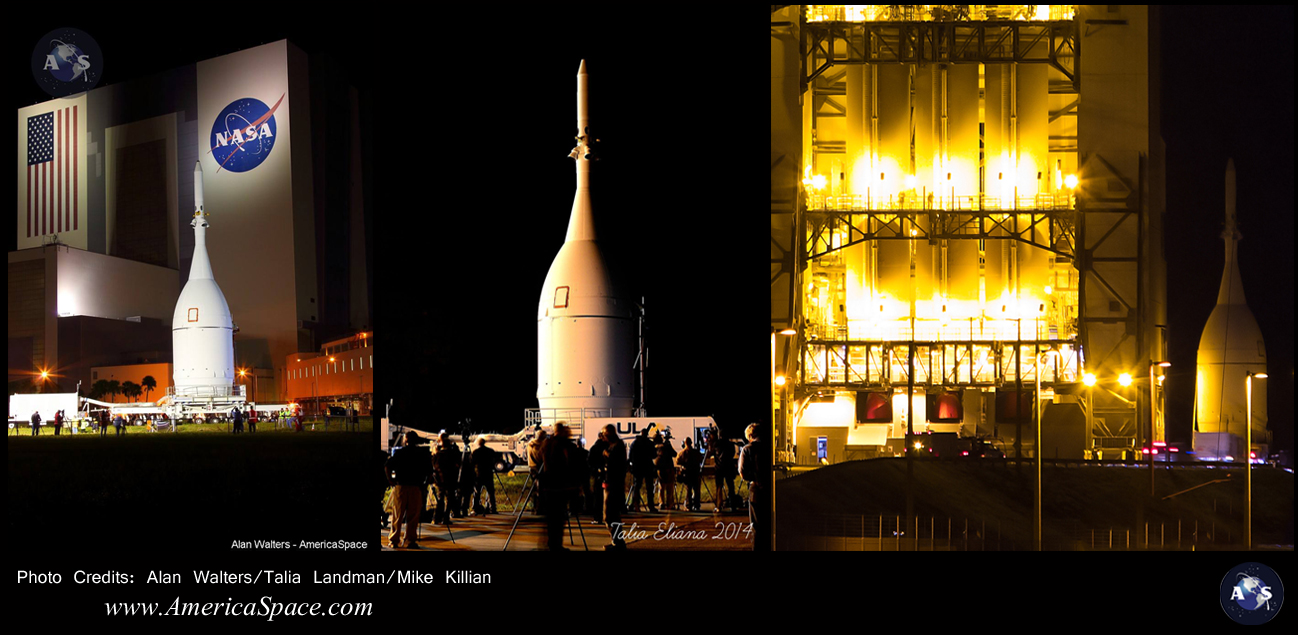
The spacecraft which will eventually send NASA’s astronauts to Mars and back has arrived at its Florida launch pad to meet America’s largest rocket for a scheduled Dec. 4 sunrise launch. NASA’s Orion deep space crew capsule made the six hour, 5-mph, 22-mile trip from Kennedy Space Center’s (KSC) Launch Abort System Facility (LASF) to Cape Canaveral Air Force Station Launch Complex-37 Tuesday night, arriving at the launch site under a moonlit sky shortly after 3 a.m. EDT Wednesday morning, Nov. 12, 2014.
“This is the next step on our journey to Mars, and it’s a big one,” said William Gerstenmaier, NASA’s associate administrator for human exploration and operations. “In less than a month, Orion will travel farther than any spacecraft built for humans has been in more than 40 years. That’s a huge milestone for NASA, and for all of us who want to see humans go to deep space.”
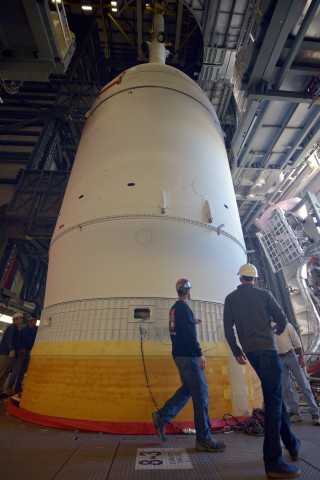
The completed 72-foot-tall Orion was originally scheduled to make its overnight trek to meet America’s largest and most powerful rocket, the United Launch Alliance (ULA) Delta-IV Heavy, on Monday, Nov. 10, but persistent storms at the launch site throughout the day forced Orion’s team to delay the move by 24 hours. Prior to the move, technicians with Lockheed Martin, Orion’s prime contractor, conducted a fairing purge test to verify how much dry gas would be required to be pumped into the space between Orion’s Ogive panels (which protect Orion from harsh vibrations during launch) and the spacecraft to prevent moisture from the humid Florida climate getting trapped between the spacecraft and the panels, which could cause corrosion and contamination.
Once Orion arrived at the pad, crews wasted no time getting Orion attached to the Heavy either, hoisting the 48,000-pound spacecraft nearly 200 feet in the air to mate it with the top of the mammoth launch vehicle that will send Orion farther into space than any human-rated spacecraft has been since Apollo 17 went to the moon in 1972. Over the next three weeks, both the rocket and Orion will be integrated and powered up, and interfaces between the two will be verified in preparation for the upcoming high-profile launch.
The rocket itself arrived at the launch pad Sept. 30 to begin performing extensive launch vehicle readiness testing, and last week ULA successfully conducted a Wet Dress Rehearsal, fueling the giant rocket with liquid Hydrogen and liquid Oxygen for a practice countdown ahead of Orion’s arrival early this morning.
The enormous rocket is exactly the same as has been flown by ULA seven times previously, and so processing of the three impressive 133-foot-long common core boosters (testing, checkout verifications, etc.) and the rocket’s second stage was standard operations for ULA. However, the Orion payload is unique; its larger than the top-secret classified government satellites the Heavy is usually responsible for launching. Its payload fairing is taller and has a larger diameter than what SLC-37’s Mobile Service Tower (MST) can accommodate, and so ULA has made several modifications to the MST in recent months to support processing Orion for its December flight.
“We’ve put a lot of work into designing, building and testing the spacecraft to get it to this point and I couldn’t be prouder of the whole team,” said Geyer. “Now it’s time to see how it flies. Sending Orion into space will give us data that is going to be critical to improving the spacecraft’s design before we go to an asteroid and Mars.”
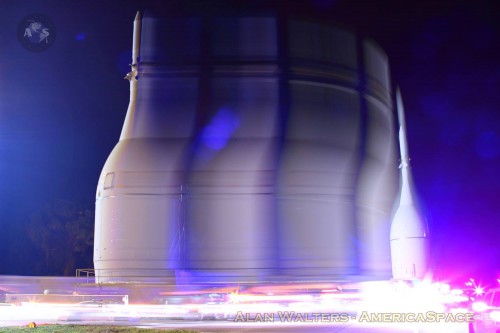
The upcoming 4.5-hour unmanned flight test will put the entire state-of-the-art spacecraft in action to validate all of its systems and hardware operate correctly in-flight (computers, software, guidance and control, the separation events, the heat shield, and parachutes). After the first orbit (two hours after liftoff) the vehicle will perform a burn to reach an altitude of more than 3,600 miles—15 times higher than the orbit of the International Space Station. Orion will then detach from the Delta-IV upper stage and re-enter the Earth’s atmosphere at more than 20,000 mph—nearly 5,000 mph faster than the space shuttle—before parachuting gently into the Pacific Ocean off the coast of southern California. The U.S. Navy will be standing by for recovery.
“This is a big deal for us, Orion is the product of a very dedicated workforce that believes keeping America first in space exploration is critical,” added Geyer. “This flight, not just the launch in Dec. but the work that went into this design, sets us up very well for the next flights, and for eventually getting people into space again.”
The data gathered during the mission will influence design decisions and validate existing computer models, as well as help to reduce overall mission risks and costs for future Orion flights atop NASA’s huge Space Launch System (SLS) Mars rocket, the first of which is already being built for an inaugural test launch “No Later Than” November 2018.
Liftoff of Orion on EFT-1 is currently scheduled for 7:04 a.m. EDT Dec. 4, with the launch window extending to 9:44 a.m. EDT.
AmericaSpace is, as always, providing on-site coverage of Orion’s EFT-1 mission, so follow our EFT-1 MISSION UPDATES page and check back regularly for updates.
BELOW: Additional images of Orion’s move to Launch Complex-37 and mating with the ULA Delta-IV Heavy rocket it will launch on for EFT-1.
Photo Credits: NASA / AmericaSpace / Alan Walters / Talia Landman / Mike Killian
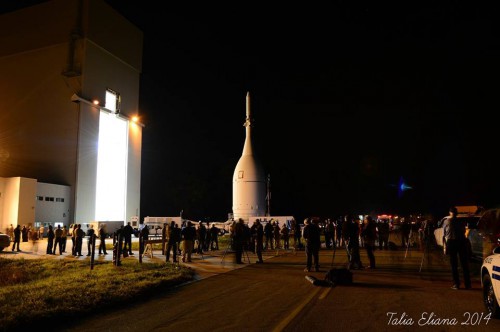
– Want to keep up-to-date with all things space? Be sure to “Like” AmericaSpace on Facebook and follow us on Twitter: @AmericaSpace
Missions » SLS » EFT-1 »




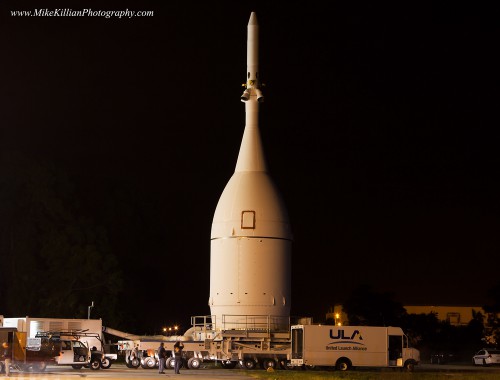

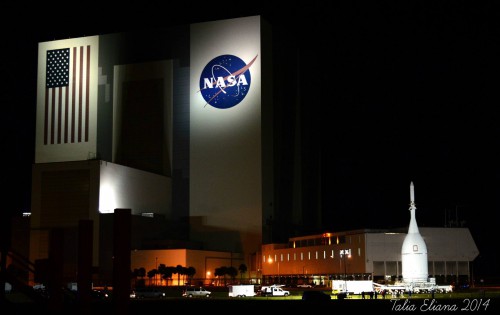
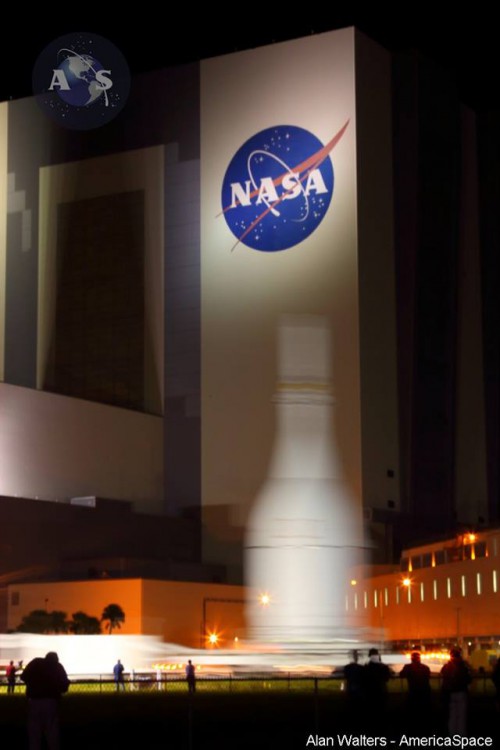
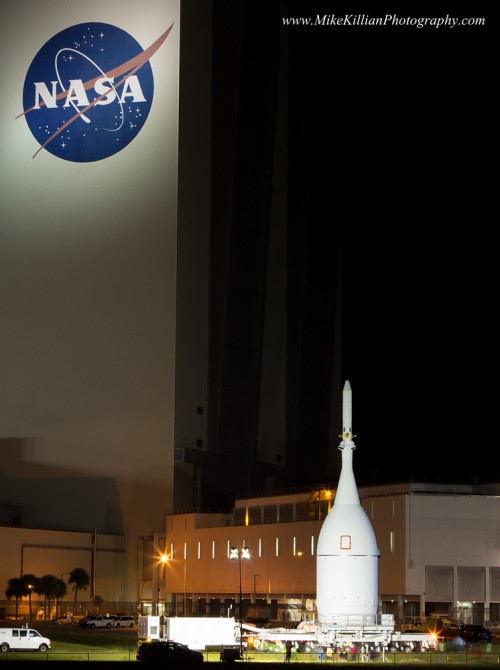
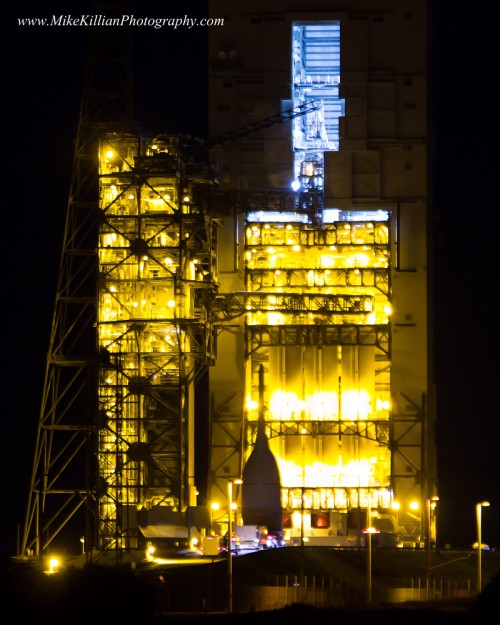
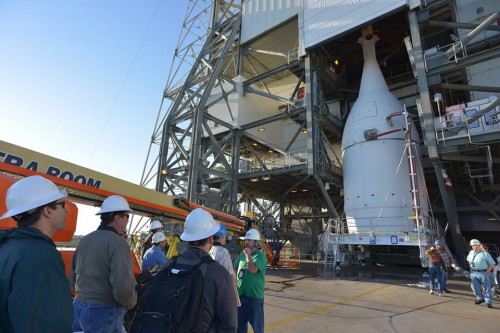
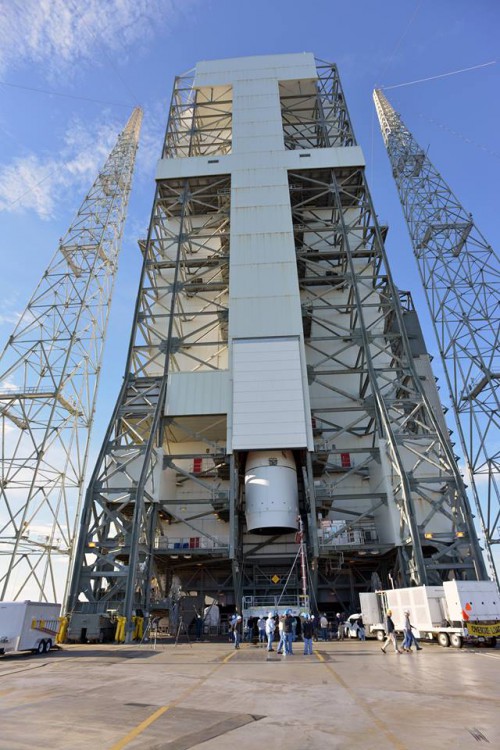
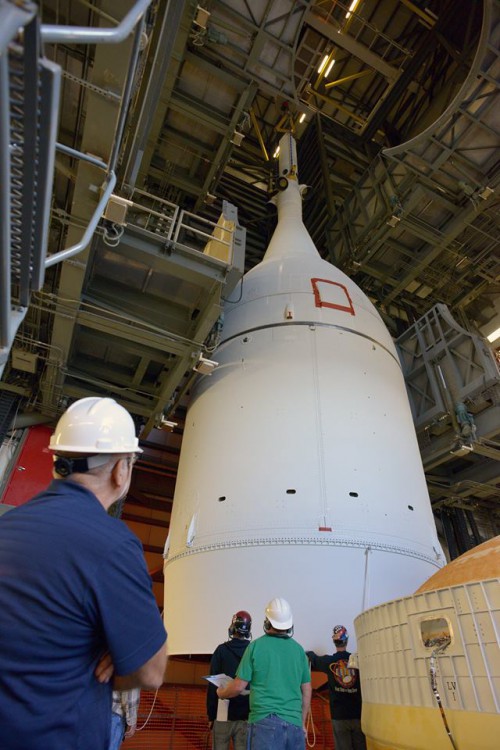
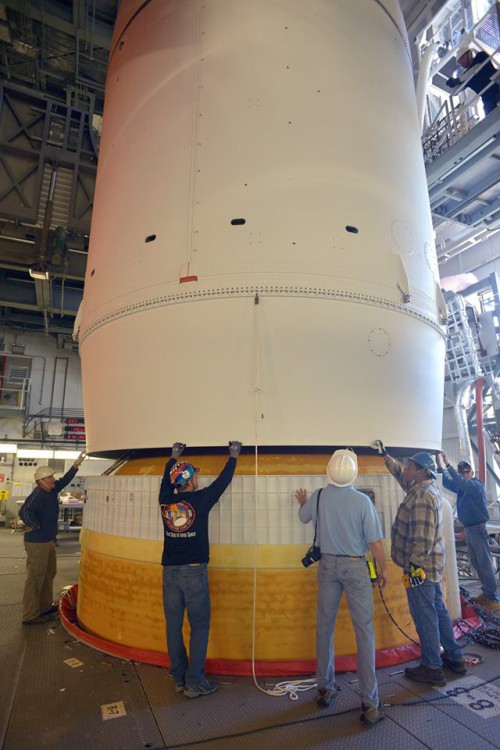
Great pictures! And with this first Orion spacecraft finally hoisted atop its Delta IV Heavy launch vehicle and the preparations to launch EFT-1 from SLC-37 in the home stretch, NASA has now gone full circle. The first test flight of Orion (which is attempting to rebuild a capability NASA abandoned 40 years ago) will be launched from the very same launch pad that was used for the first Apollo orbital test flights a half a century ago. Fingers crossed that EFT-1 is as successful as those early Apollo missions!
http://www.drewexmachina.com/2014/05/28/50-years-ago-today-the-first-apollo-orbital-test-flight/